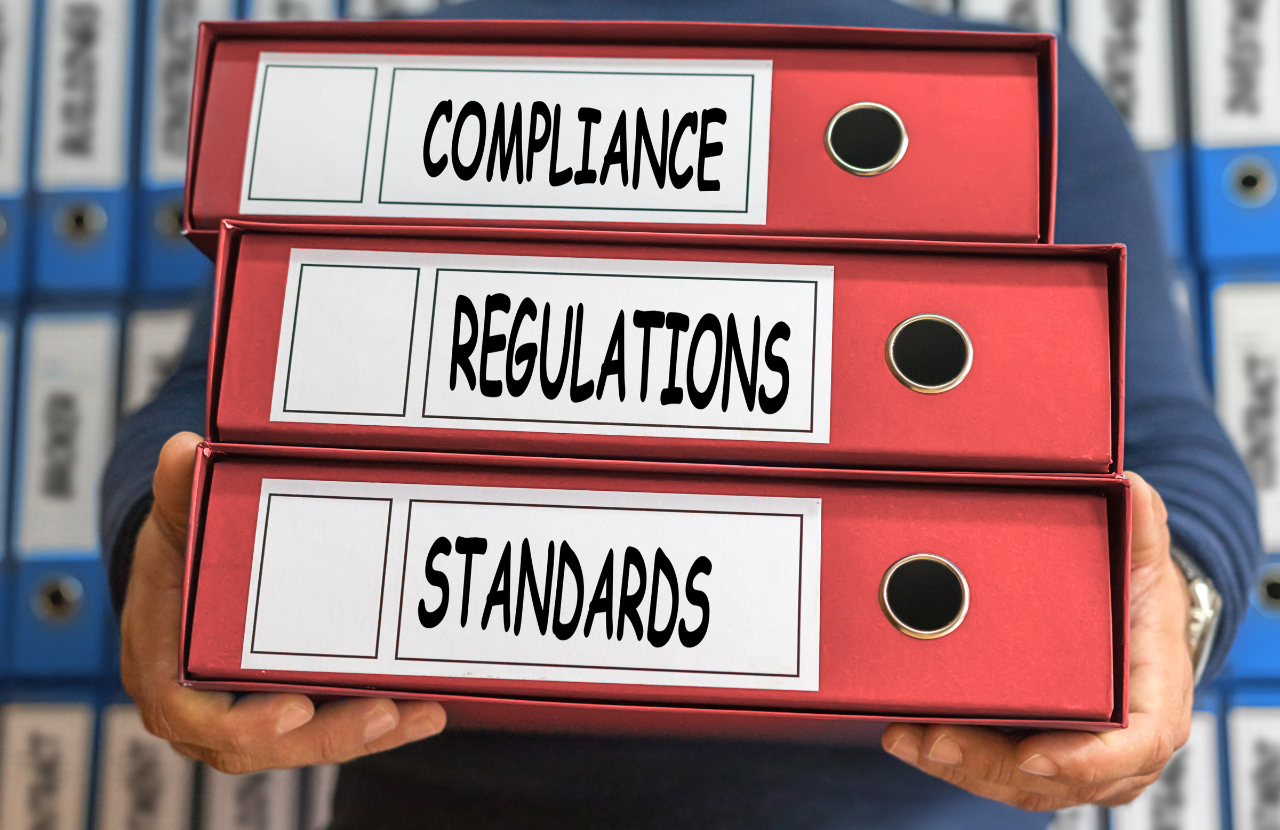
It is essential for employers to understand the Safety Representatives and Safety Committees Regulations 1977 so they can meet their legal duties and foster a safer, more collaborative workplace.
This guide explains what the regulations mean in practice, the role of safety representatives and committees, and how employers can support them effectively.
Why were the Safety Representatives and Safety Committees Regulations 1977 introduced?
The Safety Representatives and Safety Committees Regulations 1977 (SRSC) were introduced to give workers a stronger voice in workplace health and safety.
The SRSC Regulations were created following the Health and Safety at Work etc. Act 1974, which set out the main legal duties for employers to keep people safe at work. One of the key ideas in the Act was that employees should be involved in identifying and solving health and safety issues. The SRSC Regulations support this by giving trade union-appointed safety representatives legal rights to speak up on behalf of workers.
Union-appointed safety representatives can inspect the workplace, raise concerns with employers, and help make improvements. If requested by safety representatives, employers must also set up a safety committee where health and safety matters can be discussed.
The aim of the regulations is to encourage communication and cooperation between employers and employees to create safer working environments.
Who can be a safety representative?
Under the SRSC Regulations, only trade unions that are formally recognised by the employer can appoint safety representatives.
These safety representatives must be employees of the organisation and are usually selected by the union rather than elected by the wider workforce. There are no strict rules on how they are chosen, but the process is managed by the union, and the employer must be notified once a representative is appointed.
It is important to note that the SRSC Regulations only apply to union-appointed representatives. In workplaces where no union is recognised, employers still have a legal duty to consult staff under the Health and Safety (Consultation with Employees) Regulations 1996. In those cases, non-union representatives can be elected by employees, or employers can consult directly with staff.
It is important to note that union-appointed safety representatives have stronger legal rights and protections compared to non-union representatives.
What are the legal rights and functions of safety representatives?
Safety representatives appointed under the SRSC Regulations have legal rights and responsibilities that enable them to help protect the health and safety of their colleagues. These rights are protected by law, and employers must support and cooperate with safety representatives in carrying out their role.
Safety representatives have the right to carry out regular workplace inspections to identify potential hazards and check that health and safety measures are being followed. They can also investigate accidents, near misses, and complaints raised by employees about health and safety concerns.
A key part of their role is representing employees in discussions with the employer on health and safety matters, helping to ensure workers’ views are heard and acted on. The Health and Safety Executive (HSE) highlight that consulting workers leads to better risk control measures and a more positive health and safety climate overall.
Safety representatives are entitled to access relevant health and safety information from the employer and must be given paid time off to carry out their duties and attend approved training.
The rights and functions of safety representatives are set out in Regulation 4 of the SRSC and further guidance is available from the Health and Safety Executive (HSE).
What is the role and value of safety committees?
Under the Safety Representatives and Safety Committees Regulations 1977 (SRSC), an employer must set up a safety committee if two or more trade union-appointed safety representatives formally request one. These committees bring together employer and employee representatives to discuss and review health and safety matters in the workplace.
The primary role of a safety committee is to act as a consultative body. It provides a formal space where issues such as workplace risks, accident trends, near misses, training needs, changes to working practices, and health and safety policies can be openly discussed. The committee helps ensure that the knowledge and experience of workers, represented by their safety representatives, directly inform how health and safety is managed.
Safety committees should not replace day-to-day health and safety management but support it by encouraging ongoing dialogue and problem-solving. They can help evaluate the effectiveness of control measures, contribute to the development of safe systems of work, and advise on the introduction of new technologies, processes, or substances.
For committees to function well, it is important to:
- Have a clear structure and terms of reference
- Meet regularly (e.g. quarterly)
- Ensure all members are trained and understand their role
- Keep minutes and track progress on agreed actions
- Foster open, respectful communication between all parties.
An effective safety committee supports a collaborative health and safety culture. It builds trust between workers and management, encourages shared responsibility, and demonstrates a proactive commitment to reducing risks and improving wellbeing at work.
Guidance on setting up a safety committee can be found on the Health and Safety Executive (HSE) website.
What are an employer’s duties?
Employers play a key role in ensuring the effectiveness of safety representatives and safety committees. The SRSC Regulations set out specific legal duties, but good practice goes beyond compliance to support a positive and collaborative health and safety culture.
Legal duty to consult and cooperate
Under Regulation 4 of the SRSC Regulations, employers must consult with recognised trade union-appointed safety representatives on matters affecting the health, safety, and welfare of employees. This includes:
- Introducing new equipment or procedures
- Making changes to the work environment
- Reviewing or creating health and safety policies.
Consultation must be meaningful and timely, giving representatives the opportunity to influence decisions before they are finalised.
Respecting the rights of safety representatives
Employers are legally required to respect the rights of safety representatives, which include:
- Carrying out inspections
- Investigating complaints and incidents
- Receiving health and safety information
- Attending approved training
- Having paid time off to perform their functions.
Failure to recognise or obstruct these rights can lead to a breakdown in trust and may breach legal obligations.
Encouraging open dialogue and shared responsibility
Creating an environment where safety representatives feel listened to and valued is vital. Employers should promote regular communication, both formally through safety committees and informally on a day-to-day basis. Joint problem-solving and shared accountability help create safer and more productive workplaces. This cooperative approach leads to better employee engagement and stronger compliance with health and safety standards.
Further guidance on involving workers in health and safety is available from the Health and Safety Executive (HSE).
Providing access to information and training
While it is the trade union’s responsibility to provide training for safety representatives, employers must allow them to attend training without loss of pay. Training helps representatives understand their role, health and safety law, and how to identify and manage risks effectively.
In addition, employers must provide access to relevant health and safety documents and data, such as:
- Risk assessments
- Accident and incident reports
- Safety audit results
- Health surveillance data (where appropriate).
Sharing this information enables representatives to carry out their duties properly and contribute to meaningful discussions and improvements.
What are the benefits of engaging with safety representatives?
Engaging with safety representatives benefits everyone. It improves safety outcomes, supports legal compliance, boosts staff morale, and builds a culture of shared responsibility.
Reduction in workplace accidents and incidents
One of the most significant advantages of engaging with safety representatives is a decrease in workplace accidents, injuries, and work-related ill health. Safety representatives are often the first to spot risks or unsafe practices and can work with employers to take action before harm occurs.
The TUC has gathered extensive evidence showing that workplaces with active safety representatives are safer than those without. One TUC study found that the presence of safety representatives and joint safety committees can reduce injury rates by as much as 50%.
Improved employee morale and trust
Giving employees a voice through safety representatives fosters a culture of respect and trust. Workers are more likely to report issues, suggest improvements, and feel valued when they know their concerns will be listened to and acted upon. This contributes to better morale, lower absenteeism, and increased job satisfaction.
A strong relationship between safety representatives and management also helps to avoid disputes and builds a more cooperative and open working environment.
Compliance with health and safety legislation
Safety representatives support employers to meet their legal duties. They can support the development and review of risk assessments, help communicate health and safety policies and monitor compliance with regulations.
This collaborative approach reduces the risk of enforcement action, prosecutions, and reputational harm. When safety representatives are engaged, employers are more likely to stay ahead of regulatory changes and industry standards.
Support compliance with the Safety Representatives and Safety Committees Regulations 1977
Providing employees with effective health and safety training is essential for preventing accidents, meeting legal duties and supporting safety representatives to carry out their roles effectively.
While the Safety Representatives and Safety Committees Regulations 1977 focus on consultation and cooperation with union-appointed safety representatives, ensuring employees are trained to understand workplace risks and how to work safely strengthens that partnership. It also enables safety representatives to concentrate on identifying improvements and raising concerns, confident that the workforce understands the fundamentals of health and safety.
At Praxis42, we offer a wide range of training courses designed to promote a strong health and safety culture. From IOSH Managing Safely to Fire Safety, DSE, and Manual Handling, our courses are flexible, mobile-friendly, and developed by experts.
Explore our full range of health and safety courses or contact our friendly team today on 0203 011 4242/info@praxis42.com

Adam Clarke
Managing Director (Consulting)
